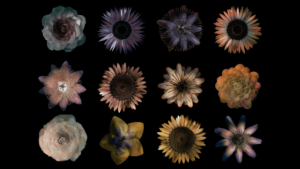Elbé Coetsee’s new book, Craft Art in South Africa: Creative Intersections, launched at Design Indaba Expo 2015, balances the handmade work of local artists and the makers themselves – in some cases even the unknown crafters who make pieces for groups such as Kaross embroidery project and Afrikania pottery studio. The book speaks of craft art as a decidedly human endeavour and a rich repository of creative influences, cultural traditions and personal visions.
Coetsee herself is a humane and passionate promoter of South African craft in all its intricate, textured forms. Her PhD from the University of Pretoria focussed on the demographic characteristics and entrepreneurial attitudes of this country's craft artists, and her Mogalakwena Craft Art Development Foundation trains unemployed people in not only emrboidery, sewing, beadwork, candle-making, basketry and pottery, but computer skills, first aid, AIDS awareness and care.
We asked her about how craft art in South Africa has developed over the years and how craft-based NGOs make a difference to the crafters' lives.
Why “craft art” and not “craft” and “art”?
Because I am not sure where the craft stops and art begins. For me craft art embraces the physicality of craftsmanship as well as the conceptuality of art. Willem Boshoff refers to this as “wise hands”, thus the head or intellect as well as the hand.
All the examples are in the book: Joey, the Handspring Puppet Company’s theatre puppet in the War Horse production; Walter Oltmann’s woven wire works; Ardmore; Hylton Nel; Wilma Cruise… The focus of the book is on creative intersections – thus craft art.
What are the some of the changes you noticed in the craft art being produced since you published your first book in 2003?
The current works amplify a blurring of lines that distinguish between fine art and craft. Works of artists included in the book are found in prestigious international and national exhibitions, displayed in exclusive art galleries and specialist shops around the world, and also in modest studios in rural villages in South Africa.
Among the resurgence of craft traditions in South Africa, are there any that you are concerned about us losing – any particular region, group or skill that has not received attention and may be in danger of slipping away?
In the areas that I visited there are less basket weavers than before, maybe because it is difficult to market enough of the traditional baskets at a price that would provide ample remuneration for the weaver. I believe it makes a difference when contemporary designers work with basket weavers to create contemporary products, for example Binky Newman of Design Afrika working with the Dunoon weaving project, Beauty Ngxongo with guidance from the African Art Centre, and the Mogalakwena weavers who works with Italian designer Paola Lenti to weave the Afra chair and before her with Haldane Martin to weave the Zulu Mama chair. They apply traditional weaving skills, but there is a much bigger market for the products.
One of the best examples of creative economy in South Africa is the many job-creation NGOs that teach craft skills to under-resourced communities. In your experience at Mogalakwena Craft Art Development Foundation, is this really making a difference to people’s lives – do they make a living?
Yes, they do. The project has become a support system for them. It provides a fixed monthly income and skills training. Some of the women travel to trade fairs and/or visit the project’s exhibitions in cities, and all of them meet and work with artists and designers from around the world on a regular basis.
It’s strange that someone like Beauty Ngxongo has had international success almost on a par with some of our most famous artists, with exhibitions held at the Metropolitan Museum in New Yprk, yet very little fuss is made of that at home. Why do you think this is? Is there a sense with more traditional craft that the person behind it is more anonymous than the culture/community as a whole?
I think it is just a lack of marketing. Many well-known artists know where and how to market themselves, through Facebook, Instagram etc. Design magazines could certainly promote the work of rural craft artists.
You keep diaries about the things you see. Can you share an entry with us that perhaps captures your emotional response to something you have seen?
In the remote area of Limpopo where I have been working for the past 20 years, the master basket weavers, traditional beaders, potters, cow- and goat-bell makers have passed on and the traditional skills are disappearing. In circumstances like these, one of my favourite quotes brings tears to my eyes – “In Africa when an old person dies, it is as if a library has burnt down”. It is from Amadou Hampâté Ba (a Malian philosopher).
This is one of the reasons why I founded the Mogalakwena Research Centre for African Ecology and Anthropology in rural Limpopo.
See inside the book and meet the makers in our Lookbook feature.










